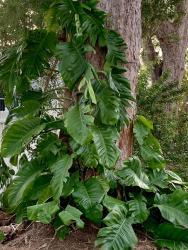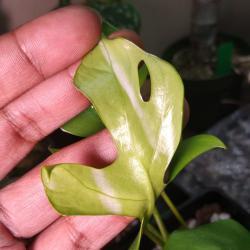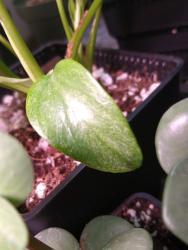There are basically 5 types of variegation. Chimeral, natural pattern variegation, Transposon variegation, Pathogen infection variegation, and Blister/reflective variegation.
because I am a plant nerd geek I like to be able to classify my variegated plants into their respective categories when I can.
If you are a geek like me here's some info to help you classify yours

1. Chimeral variegation
caused by a mutation in the meristem where two or more genotypes in the cell layers cause tissue that can produce chlorophyll and tissue that cannot. The meristem is were cell division and active growth happen. Its is made of the root tips, leaf edges, shoot tips and vascular cambrium
There are 3 types of chimeral variegation
a. Periclinal. The most stable form. AN entire layer of the meristem causes the mutation
b. Mericlinal. Unstable, only happens in one portion of the cell layer. This can be a transition state, the meristem can either go into stable periclinal variegation or lose the mutation altogether and revert back to a solid color plant
c. Sectional. also unstable, only half of each cell layer of the meristem carries the mutation. The meristem can either create an all pigmented leaf able to photosynthesize, or an all non-pigmented leaf incapable of photosynthesis.
Chimeras vary widely in stability across the plant spectrum. Variegation in the unstable forms can revert to all green or all non-pigmented (like in the all white leaves of variegated ALocasias or the all pink leaves of Philodendron Pink Princess.) The only way to keep the variegation going sometimes is to prune off the non-chimeral stems below where they started.
Example, Varigated Monstera, variegated ALocasias, Variegated COlocasias
2. Natural/Pattern variegation is a genetic trait in a cultivar that is inherited, and can be fixed by selecting out plants by vegetative division and propagating them by seed. Different cells in the tissue express different colors. Calathea is a great example of this. The pattern is always the same on every plant in a species
3.Transposons
A transposon is a genetic element that can move around. They are sometimes called jumping genes. They can move randomly on the chromosome and make what are called genetic mosaics. The effect created a splashed color. They differ from Chimeras because the pattern is inherited through the seed.
4. Pathogen Infection
Some viruses can cause color variations in plant tissue. Two are the Mosaic virus and the Color Break virus.These are sometimes introduced into plants while in tissue culture on purpose to produce variegation. But this can be unstable and fade over time. It can be made stable sometimes through vegetative propagation.
5. Reflective variegation (also called Blister variegation)
Thi s is where tiny air pockets present between the pigmented lower cell layer and the non-pigmented upper cell layer. This makes a patch of transparency that reflects light and gives a shiny look, or a silver look. It can cover the entire leaf, or be patchy.
Examples of Chimeras
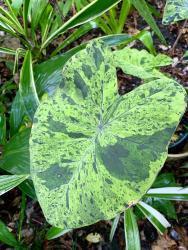
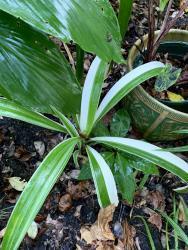
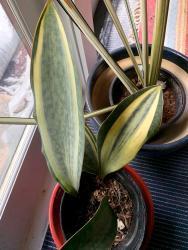
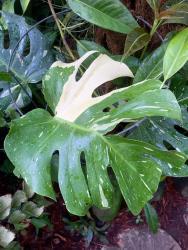
Examples of natural/patterned variegation
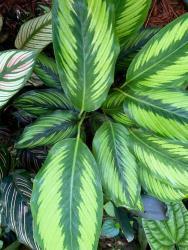
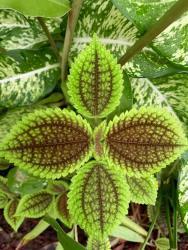
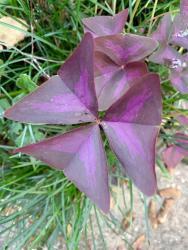
Example of Transposon variegation
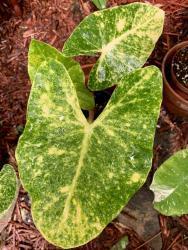
Pathogen infection Example.
This anthurium has the color break virus and its variegation is highly unstable
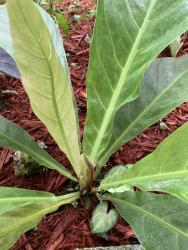
Blister variegation examples
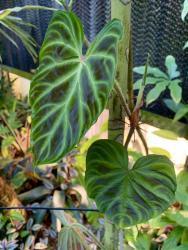
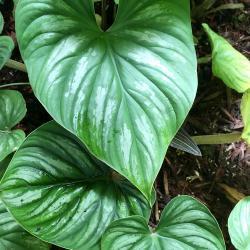

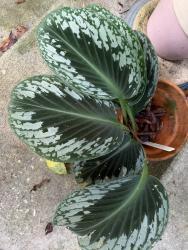
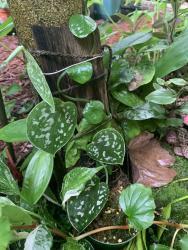
Hope I didn;t geek you guys out too much














